A “Request for Information” (RFI) is a formal request made by an individual, organization, or company to obtain information about a product, service, process, or procedure from a potential supplier or vendor.
It is a document used in procurement and purchasing processes to gather information from potential suppliers about their products or services, pricing, delivery timelines, and other important details that may influence the purchasing decision. The RFI process is typically used when a buyer needs a product or service, but does not yet have enough information to make an informed decision.
By sending an RFI, the buyer can gather information from multiple vendors and use that information to evaluate their options and make a more informed purchasing decision. The purpose of an RFI is to obtain information, not to request a proposal or quote. It is used as a tool to assess the marketplace and to gather information that can be used to make a more informed decision about the procurement process.
Characteristics of a Good RFI Document
A good RFI should help the company receive varied but valuable responses from potential suppliers. To achieve this objective, it should have the following characteristics:
Use a proper format
Good RFIs should be formatted in a standard format to make it easier for vendors to understand the challenges that need to be addressed. In addition, a standard format restricts the information that can be included in the project and nothing else. Further, a standard format should enable the company to easily compare the information provided by the vendors before selecting one.
Clearly states the purpose and scope of the request
A good RFI document should clearly state the purpose and scope of the request. This means that it should explain the reason for the request and provide a clear description of what information or clarification is being sought. By doing so, it helps to ensure that the responding party understands the request and can provide a meaningful response. Additionally, a clearly stated purpose and scope can help minimize confusion and prevent misunderstandings, which can save time and effort in the long run.
Contains specific and well-defined questions or requests for information
A good RFI document should provide a clear and concise description of the project or work to be performed. This means that it should include all the relevant details and specifications about the project, as well as any special requirements or considerations. A well-written RFI will help to ensure that all parties involved in the project are on the same page and have a clear understanding of the project’s goals and objectives. It can also help to prevent misunderstandings and errors in the future by ensuring that everyone is working from the same set of information.
Includes a reasonable deadline for response
An effective RFI document should also include a reasonable deadline for responses and allow sufficient time for vendors to prepare and submit their responses. This helps to ensure that vendors have enough time to thoroughly review the RFI document and prepare a thoughtful and complete response. Additionally, including a deadline helps to keep the RFI process moving forward and ensures that responses are received on time. It is important to ensure that the deadline is reasonable and allows vendors enough time to respond without feeling rushed or pressured.
Benefits of an RFI
Using a Request for Information (RFI) in a project or procurement process has several advantages, such as:
- Firstly, it helps to gather information and clarify any doubts or uncertainties regarding the project, product, or service. This can help prevent any misunderstandings or miscommunications between parties involved in the project.
- Secondly, it can help to ensure that all potential vendors or suppliers have a clear understanding of the requirements and scope of the project, which can help to improve the quality of the responses and proposals received.
- Thirdly, it can help promote transparency and fairness in the procurement process by ensuring that all vendors have equal opportunities to provide information and respond to the RFI.
- Finally, it can help save time and resources by allowing vendors to submit their responses electronically, reducing the need for multiple rounds of communication and clarification.
Free Template: Request for Information
Templates for word
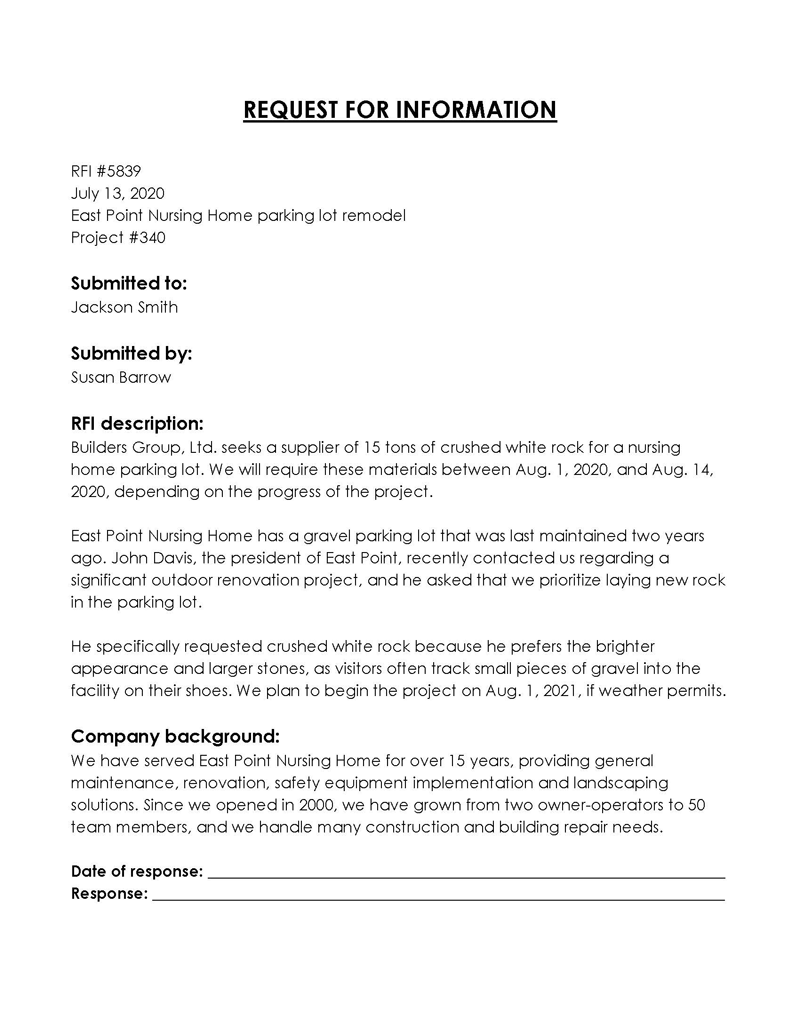
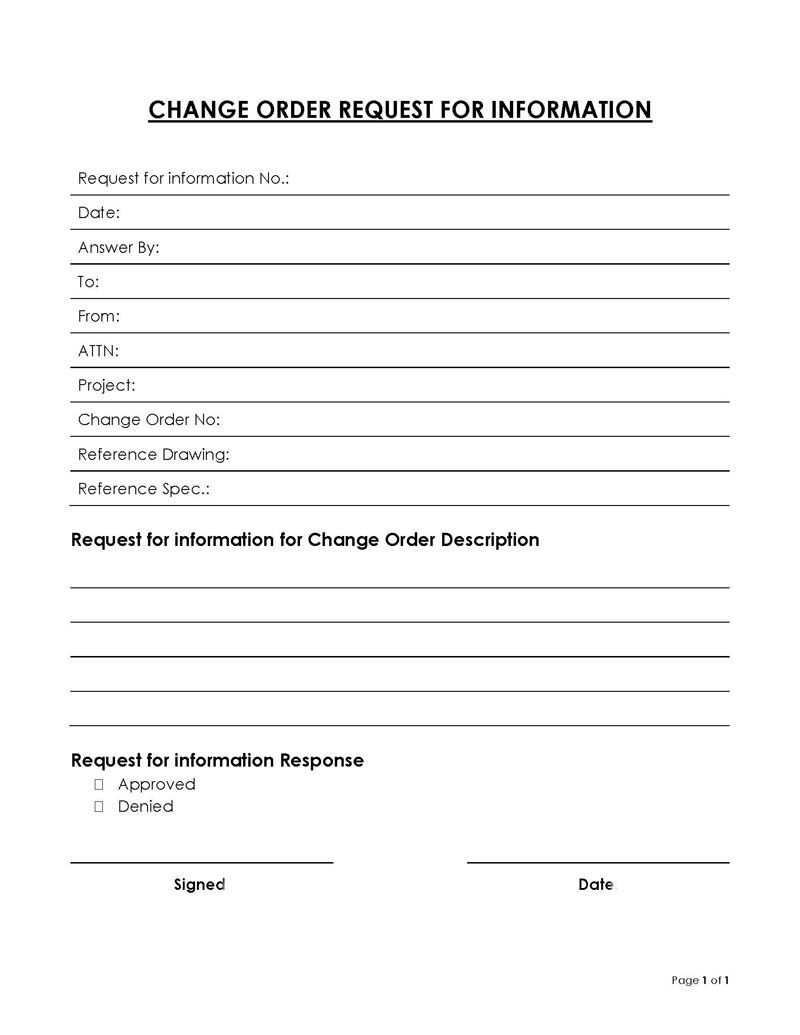
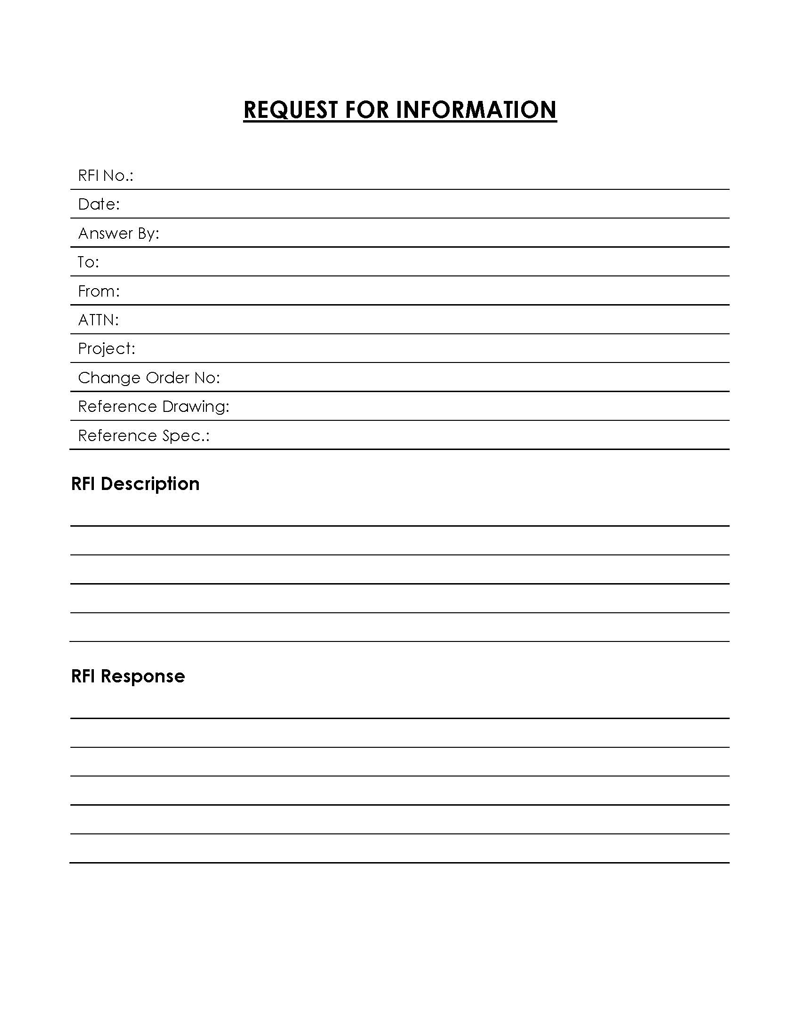
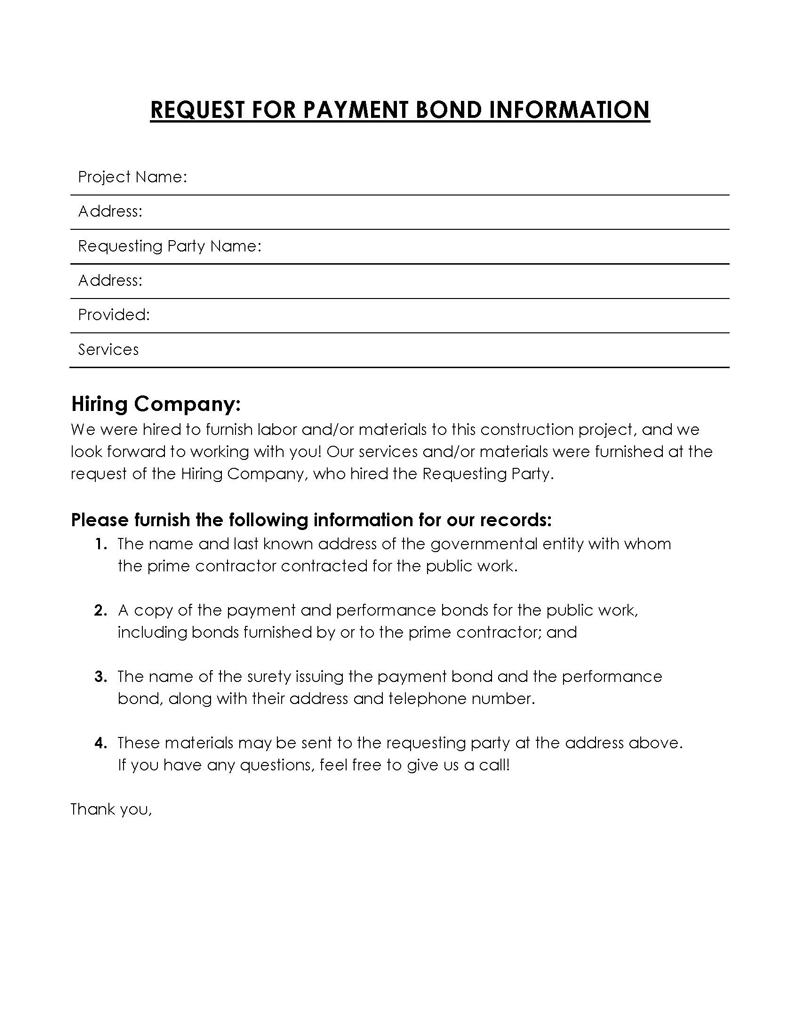
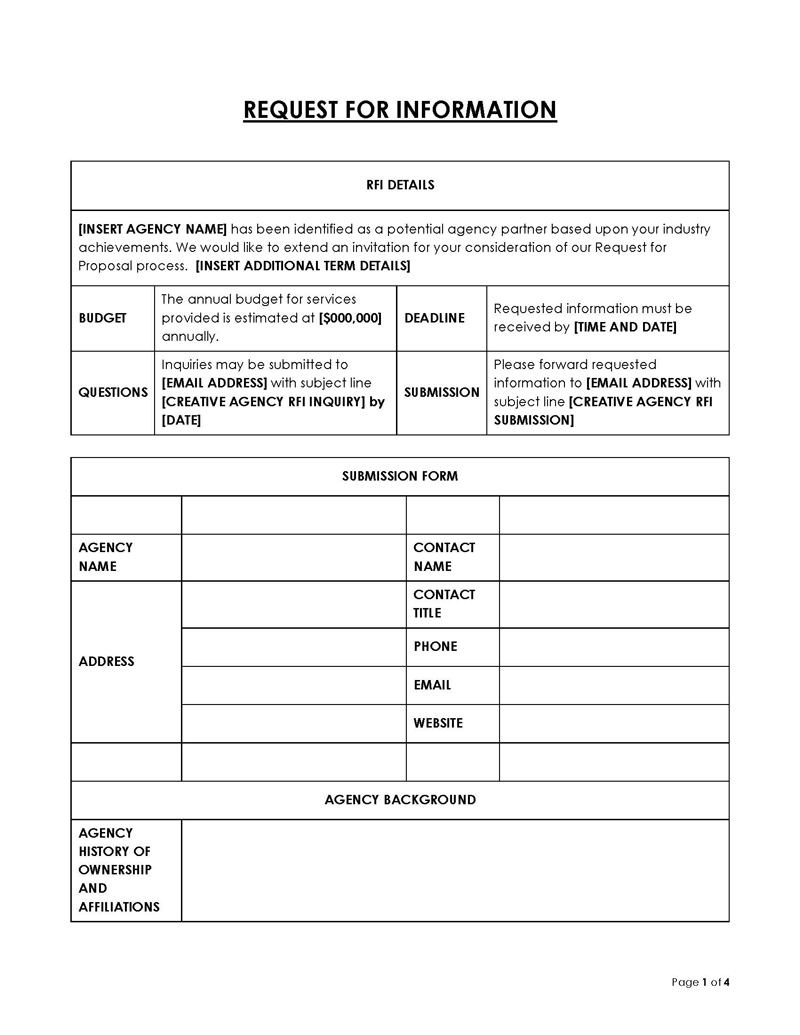
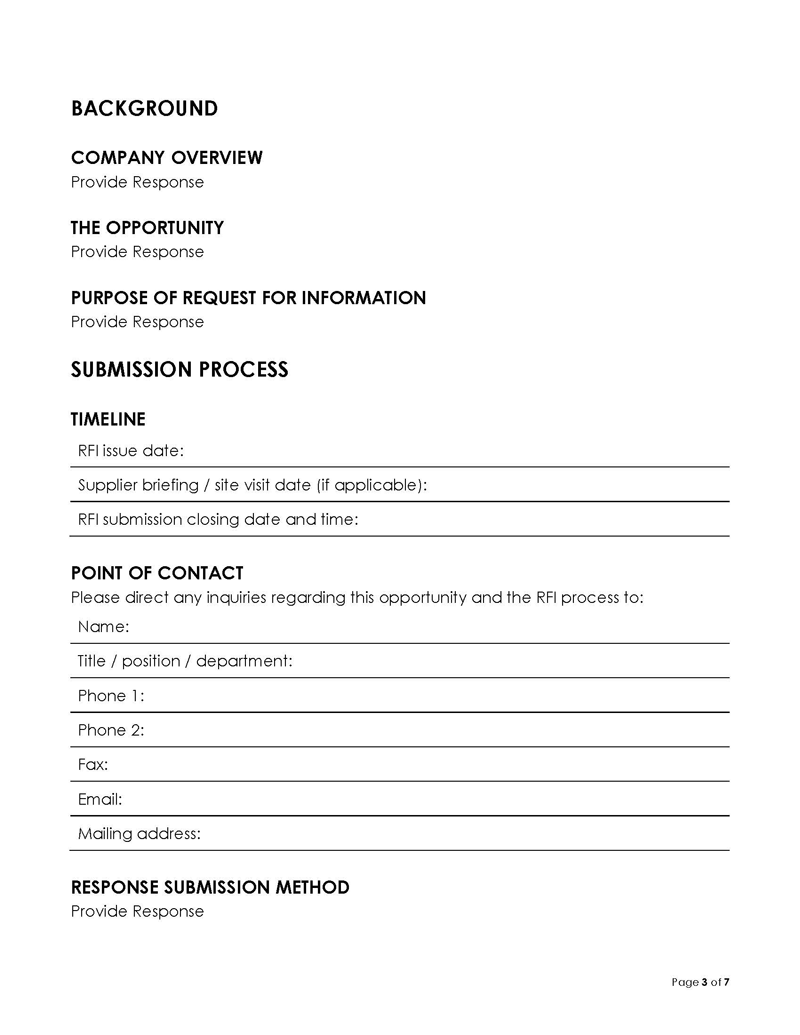
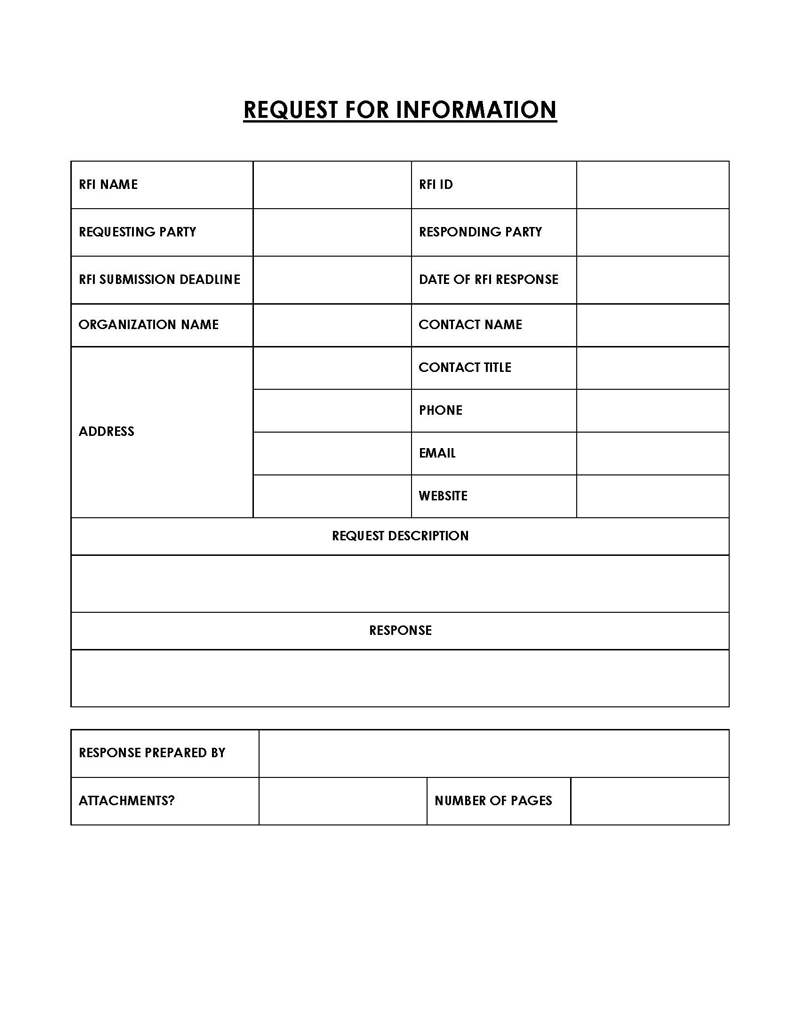
Templates for excel
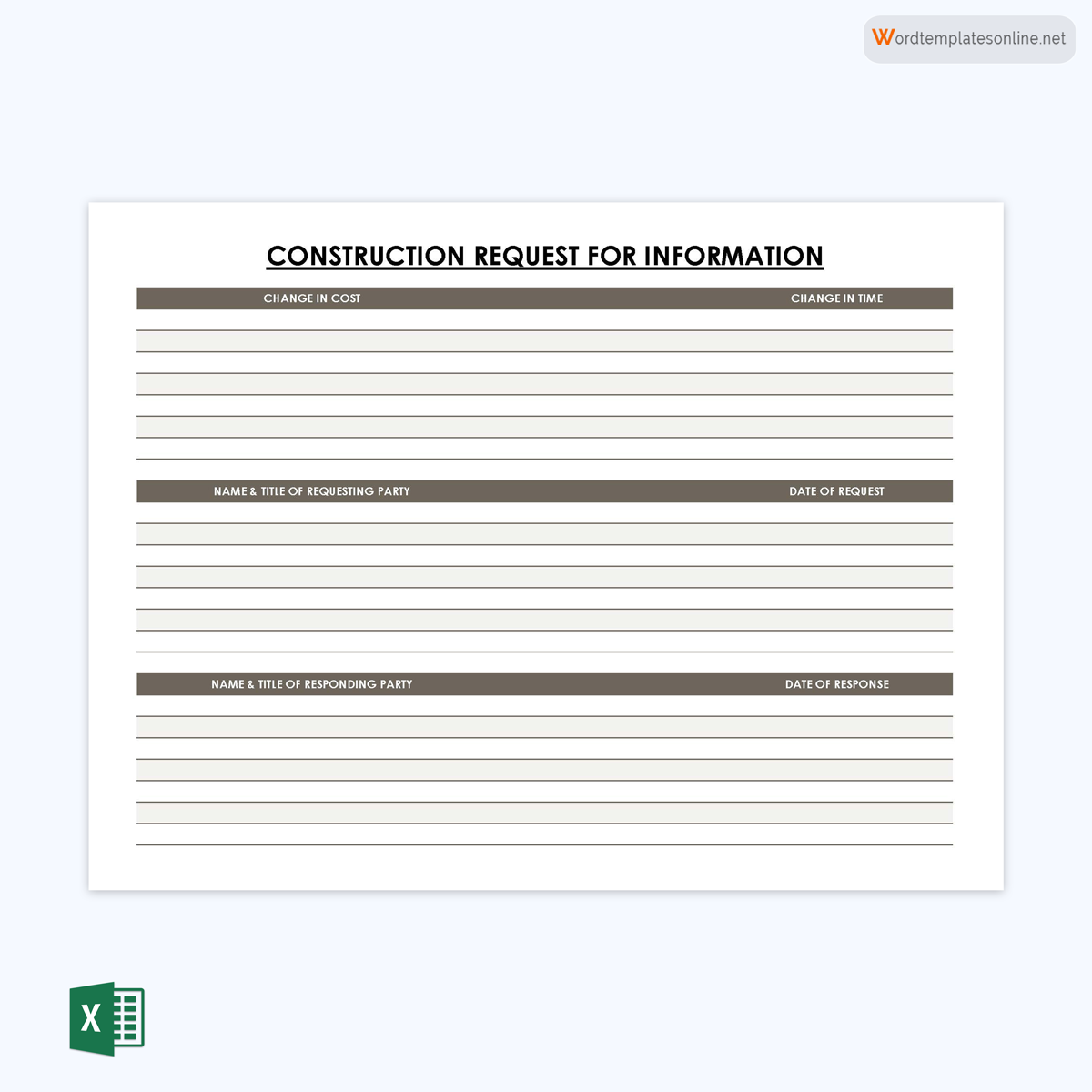
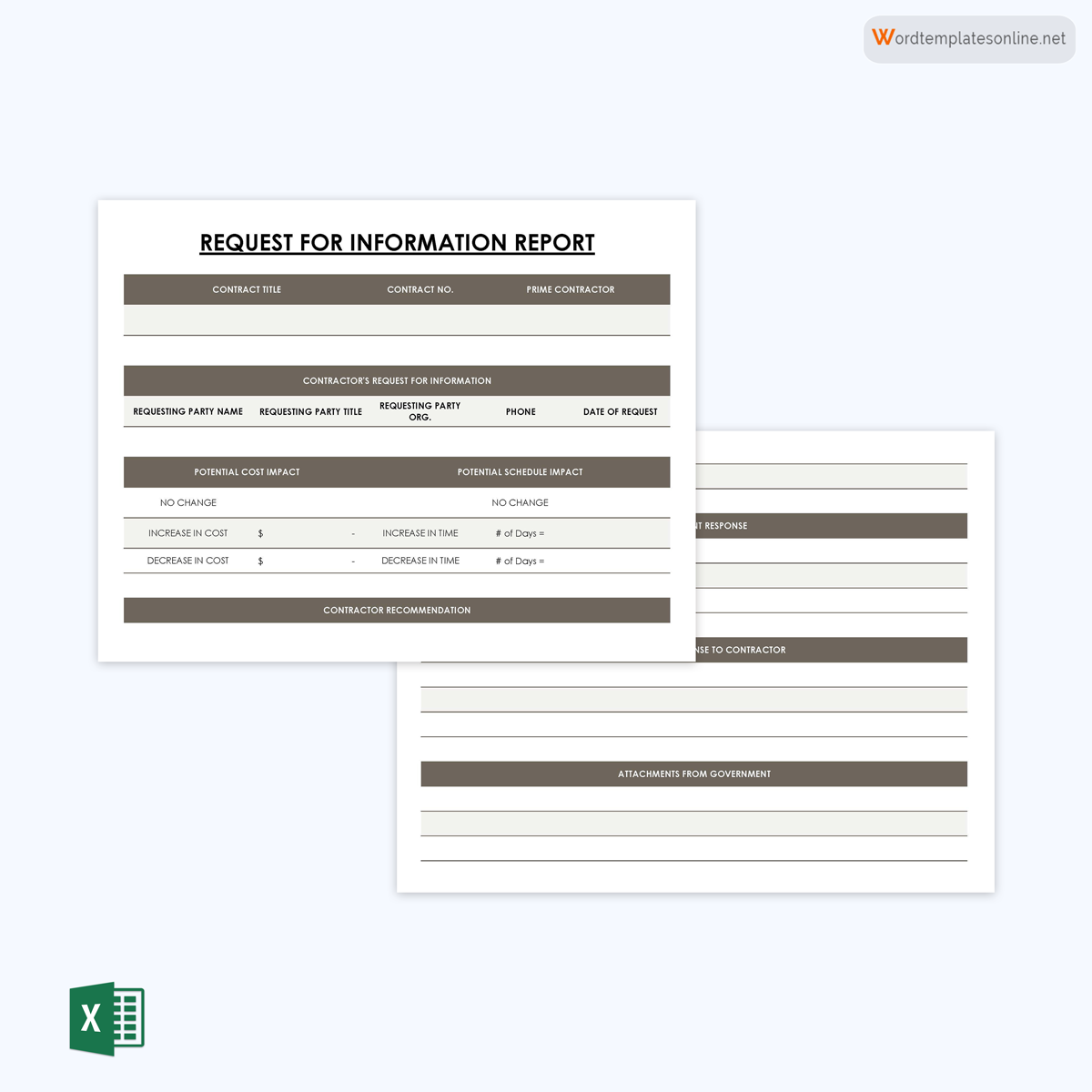
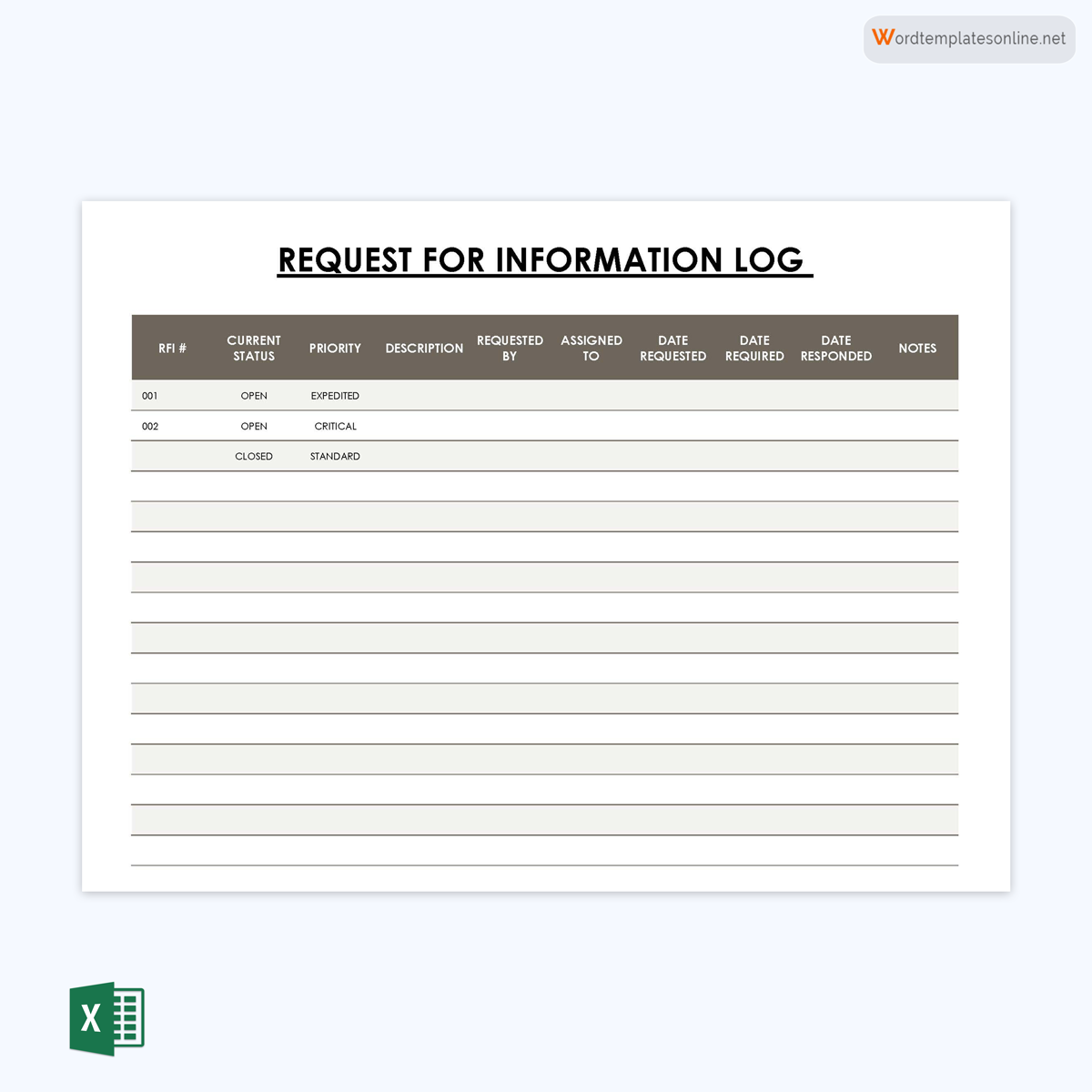
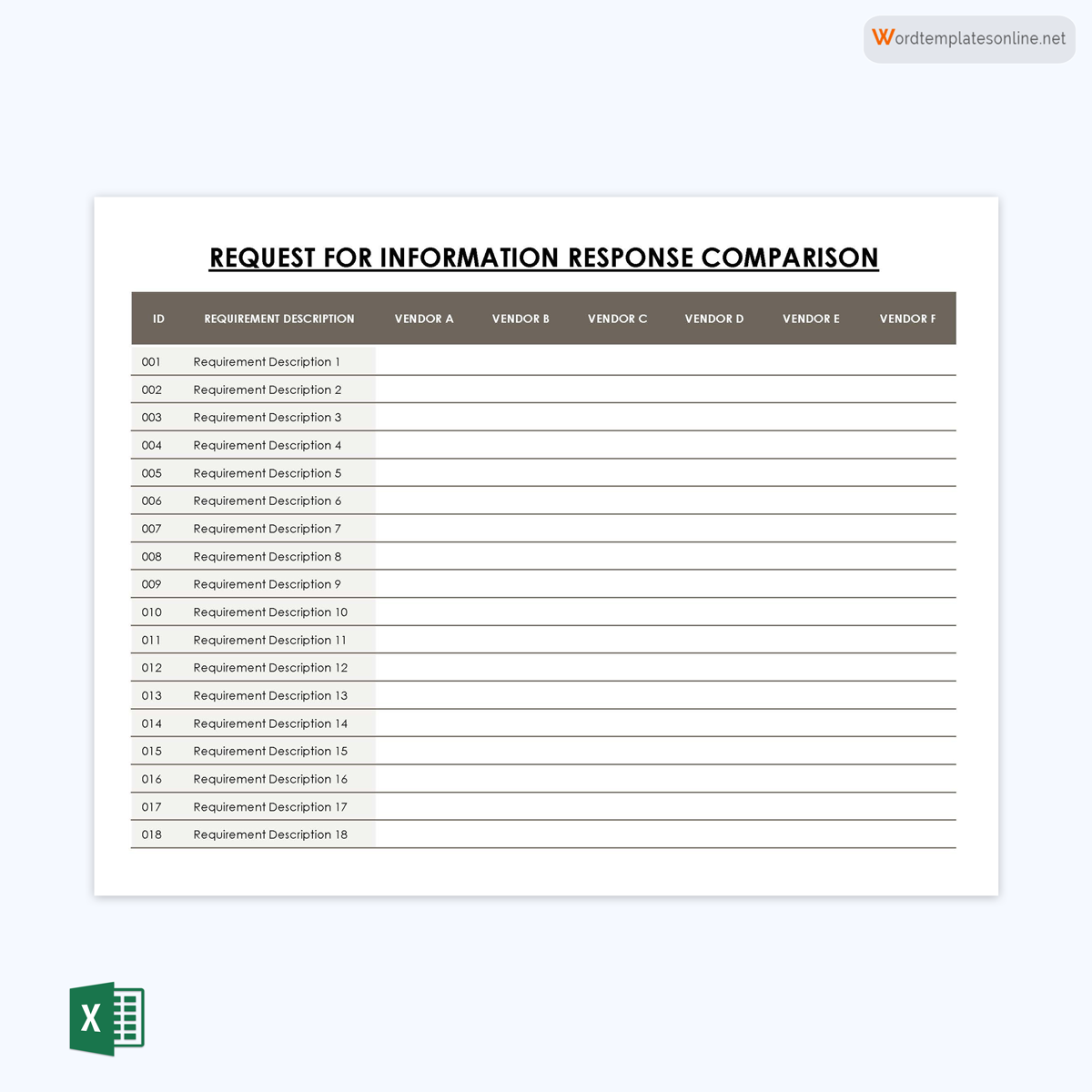
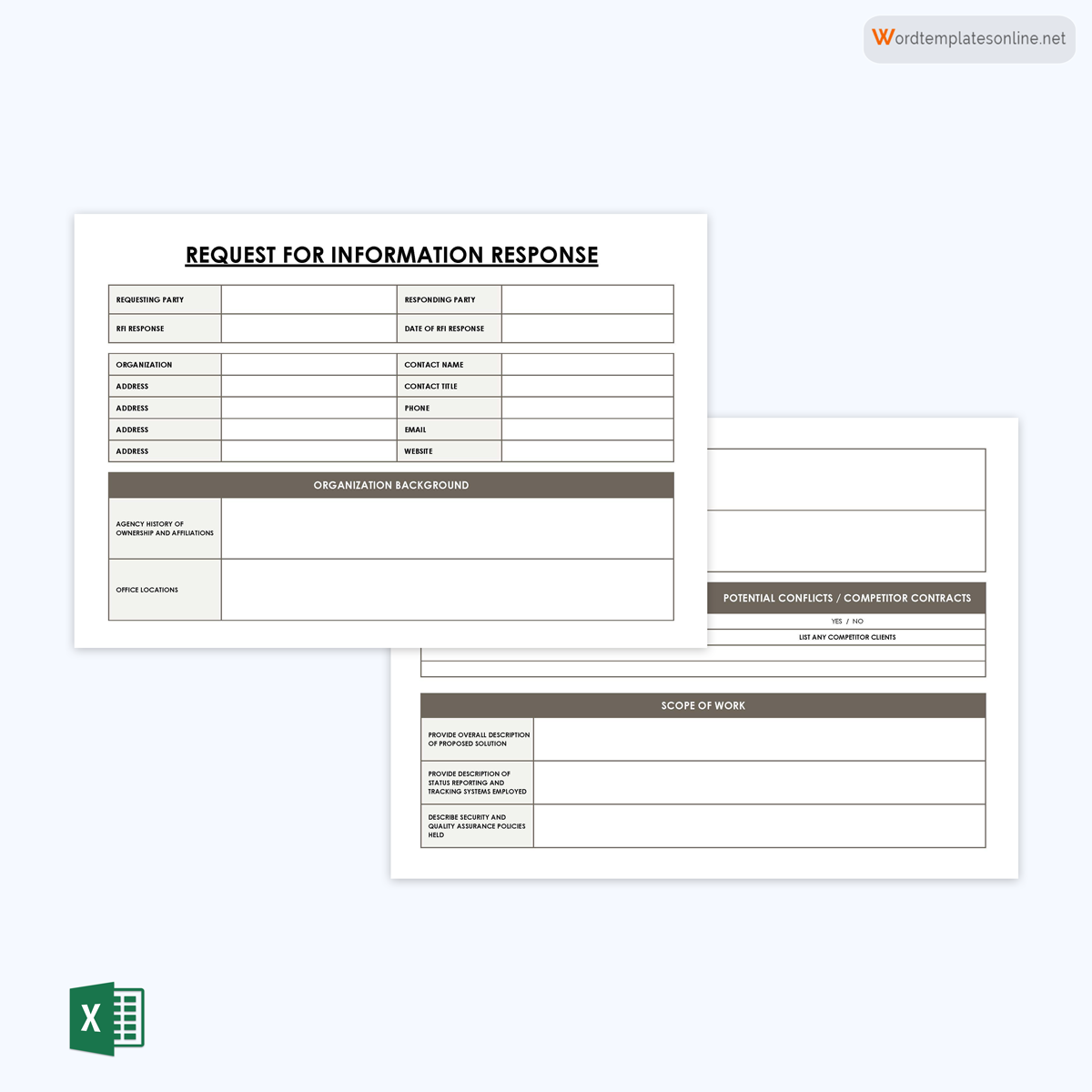
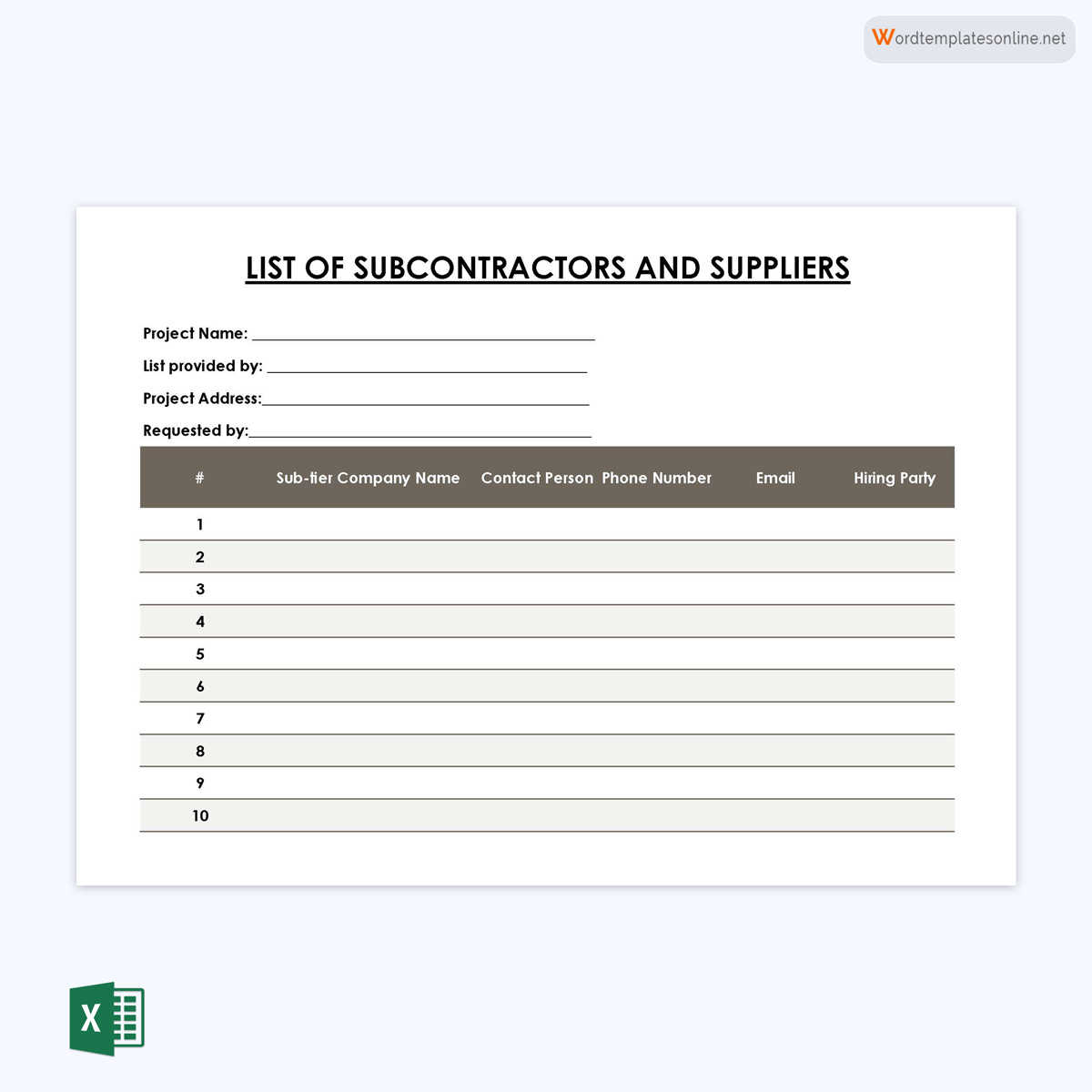
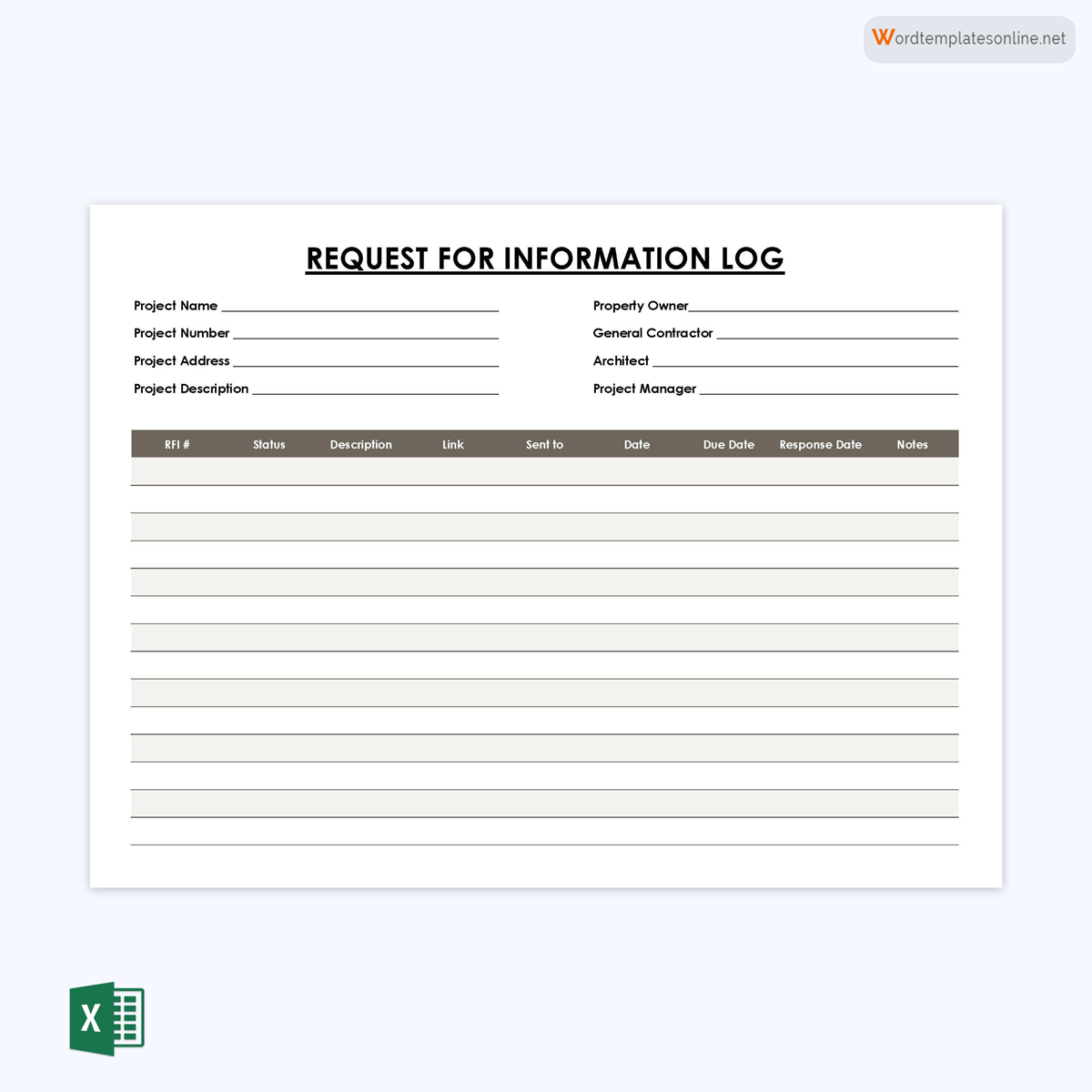
Steps for Writing an RFI
Now that you know what an RFI is, you should know how to create one. The following steps can help you make an effective document:
Form a knowledgeable team
The team creating the RFI must be knowledgeable in matters of procurement and the completion of the project. The team should include the project manager, the program contracting officer, and the RFI manager. This team should understand how to conduct the process, from defining the project and assessing potential vendors to giving feedback to stakeholders.
Provide basic information
The essential information helps the company introduce itself to potential vendors. It should include the name of the company, the recipient’s name, the date the document was written, the reference number, and the project’s name. In addition, it should let the recipient know who issued the RFI and how and when they need to respond to it.
Create a statement of purpose
The statement of purpose helps the potential vendor understand the problem to be addressed and how they need to approach it professionally. The statement should not be overly specific, though, as an RFI only solicits expressions of interest and does not constitute a binding contract.
Include company background
The company background helps the vendor know how to approach the issue and provide a solution aligned with the company’s objectives and practices. It includes a brief statement of company values, mission, vision, and specialization so that the vendor can customize the response to your needs. The background may also include the company’s website and contact details to allow the vendor to contact the company in case they require clarification.
Write project details
The project details include the parameters to be considered for the project. The details should be sufficient for the vendor to know exactly what problem they are addressing and respond appropriately. Where necessary, the details should include hypothetical timelines, the objective of the project, and the considerations that will be used to select the project’s suitability.
Attach a response section
The response section should be a blank space for the vendors to write their responses. The response should provide information on the vendor and their team. It should also give details on how the vendor intends to resolve the issue. It is good practice to leave at least half a page for this section. The answer should reveal whether you can cooperate with the vendor’s team and whether their work ethics are compatible with those of the business.
additional tip
When writing the response section, include details on how the vendors are expected to respond, such as formats, preferences for case studies, and visual representations. It will help the vendor understand how to format the answers and provide standard information that can be compared to other responses.
Conclusion
Remember that an RFI is not an offer. You are looking for solutions, and the vendor has the freedom to create a response that caters to your problem effectively. By clearly defining questions and concerns, RFIs ensure that all stakeholders are on the same page and help to prevent misunderstandings and mistakes. To create an effective document, it is important to follow the proper format, provide clear and concise information, and collaborate with all relevant parties. By doing so, you can ensure that your RFIs are answered promptly and accurately, helping to ensure the success of your construction projects.




